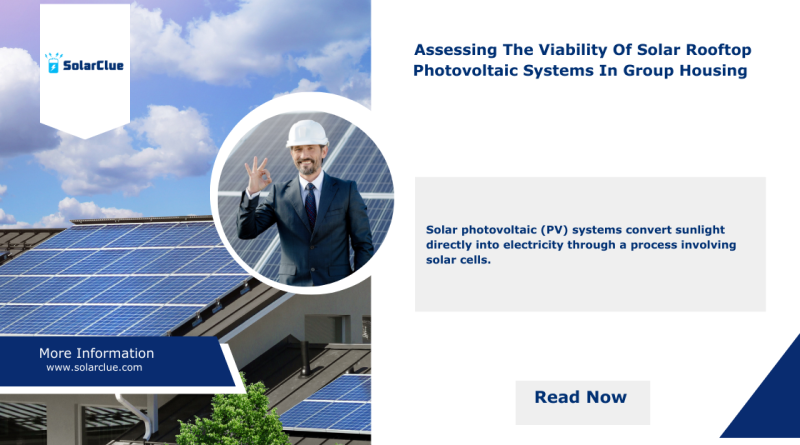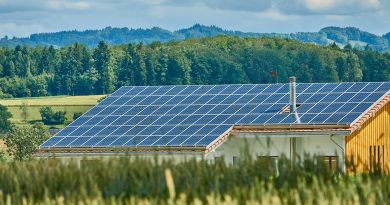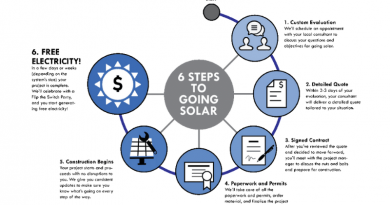Assessing The Viability Of Solar Rooftop Photovoltaic Systems In Group Housing
With the rising concerns about global warming and the escalating prices of conventional energy sources, sustainable and renewable energy solutions are becoming increasingly significant. Solar rooftop photovoltaic systems are one such solution that harness solar energy to generate electricity. This practice has become popular in single homes. However, there is an emerging interest in implementing these systems in group housing or multi-dwelling buildings, where solar capacity could be utilized on a much larger scale.
Table of Contents
Solar Rooftop Photovoltaic Systems: An Overview
Solar photovoltaic (PV) systems convert sunlight directly into electricity through a process involving solar cells. Installation of these systems on rooftops means the direct utilization of otherwise unused spaces. They are an excellent tool for reducing electricity bills, increasing green energy production and making the most of the available sunlight. Furthermore, with the vast improvements in technology and the fall in solar panel prices, installing these systems is becoming more economically feasible.
Opportunities and Challenges in Group Housing
Implementing solar rooftop PV systems in group housing can present both opportunities and challenges. The availability of large-scale roof area means a higher potential for solar energy generation. Furthermore, these systems can be an excellent way to make buildings more energy-efficient and ensure a smoother transition to green energy sources.
However, the viability of these systems is often affected by several challenges. Ownership and maintenance issues, initial installation costs, availability of due sunlight, and the exchange of excess power are some of the prominent obstacles. The complexity increases with tall buildings and whether the roofs are flat or sloped. Yet, with meticulous planning and efficient utilization of resources, these challenges can be addressed effectively.
Assessing Feasibility
To determine the viability of implementing solar rooftop PV systems in group housing, a comprehensive analysis is required. The assessment should include an evaluation of the site, the potential for solar power generation, installation costs, return on investment (ROI), and maintenance requirements.
Site Evaluation
The first step towards assessing the feasibility involves a detailed site evaluation. This process encompasses examining the rooftop’s orientation, size, shape, and any potential shading from surrounding buildings or structures. Understanding these factors helps estimate how much power can be generated, thereby informing the decision-making process.
Potential for Solar Power Generation
A detailed analysis is further required to estimate the available solar resource. Factors such as the region’s climatic conditions, sunlight hours, and seasonality affect the energy production potential. An accurate understanding of these factors will aid in the designing of an efficient PV system that optimizes energy generation.
Installation Costs and Return on Investment
Investigation into the cost of the system forms a crucial part of the assessment. This includes the cost of solar panels, installation, inverter, battery, wiring, and other hardware. Furthermore, it is vital to project the ROI by considering factors such as electricity bill savings, incentives, and feed-in tariffs. The payback period, which is the time taken to recover the initial investment, gives a clear picture of the financial feasibility of the project.
Maintenance
Last but not least, understanding the maintenance requirements is key to assessing the viability. Solar panels typically require minimal maintenance. However, any necessary repairs, cleaning, or part replacements should also be factored into the long-term financial assessment.
Conclusion
While incorporating solar rooftop PV systems in group housing comes with challenges, it offers great potential for energy-efficient, environment-friendly living. A thorough assessment considers multiple factors such as site characteristics, energy generation potential, costs, and maintenance. It is with such detailed studies that confidence can be built towards the successful implementation of solar solutions in multi-dwelling settings, presenting a promising step towards a sustainable future.
Here at SolarClue®, we offer a smart, practical, and “beautiful” solution. You will be answered for all the questions related to Solar.
We provide all kinds of brands that are the Best Solar panels in India.
If you are the one who is planning for the solar power system. Don’t hesitate to contact our team!
Looking forward to empowering you with solar energy, just like hundreds of our other clients!



